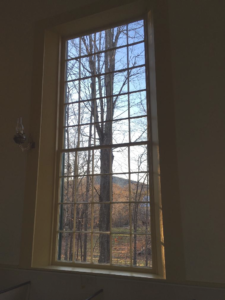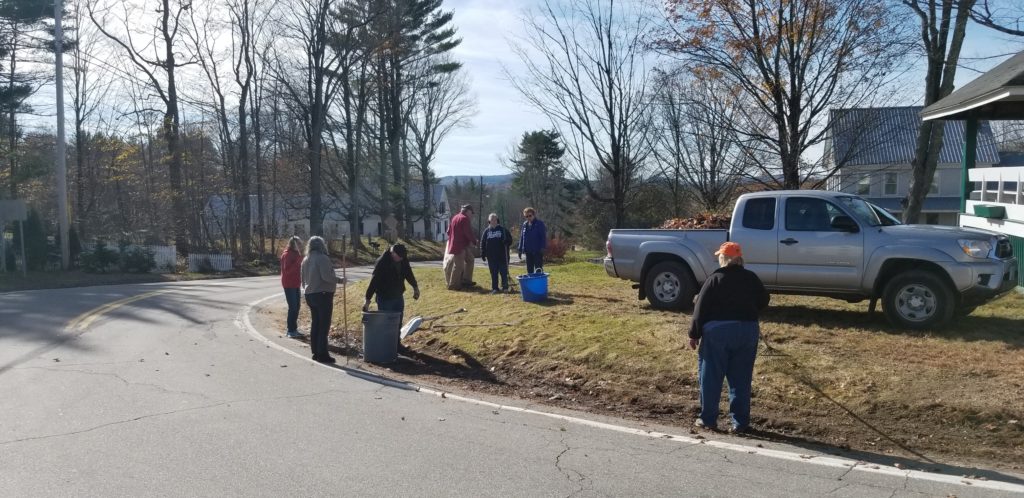A Mountain Comes into View
Those of us who live in Effingham know how prominently Green Mountain figures in daily life. Any trip of length between two points in town will involve reckoning with the mountain at the center of our township. Our location and our destination being two points on the hem of a garment, we have to decide which is the quicker path between them. The mountain is therefore never far from mind, but for certain spots in the Lord’s Hill neighborhood it can recede from view in spring when budding leaves join buildings, topographical contours, curves in the road and general busyness in obstructing a clear sightline.Then comes fall, and amid dropping leaves and browning grass, we suddenly notice its almost looming presence. Thanks to wetlands to the north and west of Green Mountain, and its long-sloping sides, the Lord’s Hill viewshed is both intimate and close. The view revealed through the Meeting House windows, across the Lord Tomb and Josiah Dearborn house to the mountaintop, is ready-made for contemplation.
The following is an excerpt from a small book of writings by Emma Cowan Dearborn (1892-1987), entitled Contemplations of a Green Mountain Girl. Emma was a sister to Richard Dearborn, the last Dearborn descendant to occupy the Josiah Dearborn house; she was the youngest of eleven siblings, born to Samuel Quarles and Emma Nichols Dearborn over a period of 24 years. The book was published by her family following her death.
THE MOUNTAIN
The mountain has a formal “map name,” Green Mountain, but locally and familiarly, and almost affectionately, it is referred to simply as “The Mountain.”
It is totally corralled by our town of Effingham, New Hampshire, and, perhaps in geographical retaliation for its confinement, it dominates the town from all angles.
Yet it is a gentle, unforbidding height, spreading arms from south to north, there to stop by the Ossipee River. This point was called “the spur,” and in early days of the town settlement was narrowly cut off in the building of a road to provide communication with the part of town known as “back of the mountain.
Tall trees march up the skylines of the two slopes, like opposing armies determined to occupy the height. But fear not, United Nations is in command there, so to speak, and the top is cleared of trees to provide unobstructed view from a fire watch tower. So the two armies will never meet.
The mountain marks the seasons. In summer the sun sets late behind the far end of the northern slope, and travels, so it seems, past the height, to set in the winter behind the far south end.
Clear, or hidden in mist, clothed in delicate green, or glorious in fall foliage, The Mountain is a very intimate part of life in Effingham.

